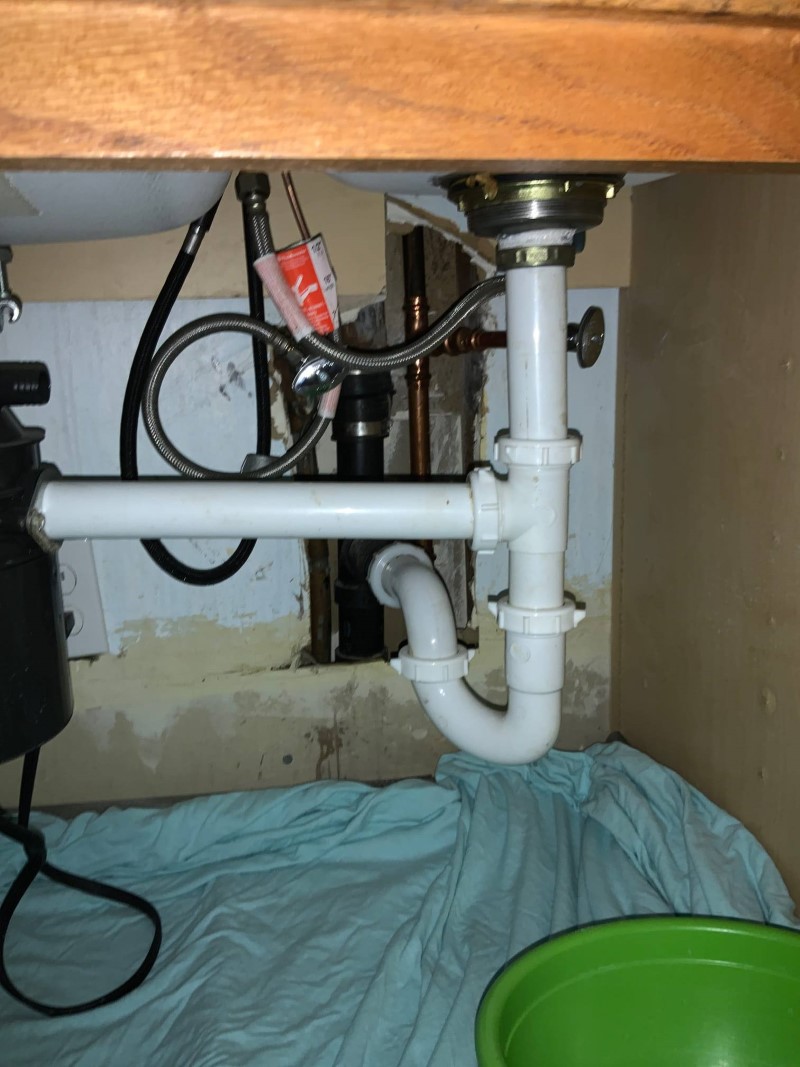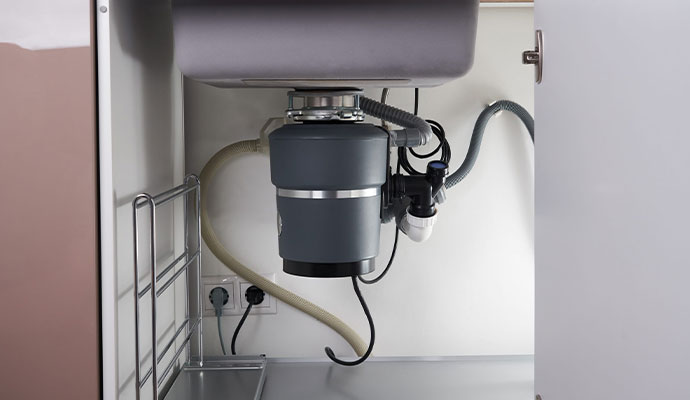My Comprehensive Guide to Fixing a Leaky Garbage Disposal
My Comprehensive Guide to Fixing a Leaky Garbage Disposal
Blog Article
Every person is bound to have their own individual opinion with regards to How to fix a pretty consistent leak from my garbage disposal.

Waste disposal unit are important cooking area appliances that assist in dealing with food waste effectively. Nonetheless, a dripping garbage disposal can be an aggravating and untidy trouble to deal with. Thankfully, several leakages can be fixed easily with a few simple steps. In this article, we will discuss how to fix a dripping waste disposal unit efficiently.
Introduction
Garbage disposals are installed under cooking area sinks and are made to shred food waste right into smaller items, permitting it to travel through the plumbing system easily. While these gadgets are normally trusted, leakages can occur over time due to wear and tear, loose connections, or damages to the device.
Usual Sources Of Leakages in Waste Disposals
Worn Seals and Gaskets
Seals and gaskets play a critical duty in protecting against water from dripping out of the garbage disposal. In time, these elements can wear away, leading to leakages around the disposal system.
Loose Connections
The connections in between the waste disposal unit and the pipes system can become loose over time, triggering water to leakage out throughout procedure.
Cracks or Holes in the Disposal Unit
Physical damages to the garbage disposal, such as cracks or holes in the housing, can also result in leaks.
Identifying the Source of the Leak
Prior to attempting to repair a leaking garbage disposal, it is necessary to identify the source of the leakage. This can typically be done via aesthetic assessment or by performing basic tests.
Visual Evaluation
Inspect the garbage disposal system meticulously for any signs of water leakage. Pay very close attention to locations around seals, gaskets, and link factors.
Examining for Leakages
One means to test for leaks is by running water through the disposal unit and checking for any visible signs of leak.
Tools and Materials Needed for Repairing a Leaking Garbage Disposal
Before starting the fixing procedure, collect the required tools and products, consisting of a screwdriver, adjustable wrench, plumber's putty, substitute seals or gaskets, and epoxy or patching product for repairing cracks or openings.
Step-by-Step Guide to Fixing a Dripping Garbage Disposal
Switch off the Power
Prior to attempting any type of fixings, make sure that the power to the waste disposal unit device is shut off to prevent the threat of electric shock.
Situate the Leak
Recognize the exact area of the leak and figure out the cause.
Tighten Links
Use a wrench to tighten up any kind of loose links in between the disposal unit and the plumbing system.
Change Seals or Gaskets
If the leak results from worn seals or gaskets, remove the old elements and change them with brand-new ones.
Patching Cracks or Holes
For fractures or openings in the disposal device, usage epoxy or an ideal patching material to secure the broken location.
Examining the Waste Disposal Unit After Repair
Once the repair is complete, evaluate the garbage disposal by running water through it to guarantee that the leakage has been solved.
Preventive Upkeep Tips to Prevent Future Leaks
To prevent future leakages, it is vital to execute routine maintenance on your garbage disposal. This consists of maintaining it clean, avoiding placing non-food products or hard things down the disposal, and regularly checking for leakages or other issues.
Verdict
To conclude, repairing a dripping garbage disposal is a reasonably simple process that can be finished with basic devices and products. By complying with the actions described in this write-up and exercising preventive upkeep, you can maintain your garbage disposal in good working problem and stay clear of pricey repair services in the future.
HERE’S HOW TO FIX YOUR GARBAGE DISPOSAL
WHAT TO DO IF SOMETHING IS STUCK IN YOUR GARBAGE DISPOSAL
If the impeller won’t turn, there’s probably something stuck in the disposal. It could be a steak bone or peach pit, although plumbers report pulling all sorts of inappropriate objects out of disposals, such as bottle caps or aluminum foil. Make sure power to the disposal is off, and look inside to see if you can see the source of the jam.
Never stick your fingers in a disposal. Pull out anything you see with tongs or pliers.
If the disposal still won’t work, it may be time to call a plumber or consider buying a new disposal. GEM Plumbing & Heating is here for all of your garbage disposal needs.
WHAT TO DO IF YOUR GARBAGE DISPOSAL DRAIN IS CLOGGED
Take everything out from underneath your sink and put a bucket or other container under your disposal to catch any water that drains out. Disconnect your disposal from the power supply. If it’s plugged into a wall outlet, unplug it. If it’s hardwired into an electrical box, go to the electrical panel and turn off the breaker for the disposal. Pour ¼ cup of baking soda into the drain, followed by ½ cup of white vinegar. Give the solution a few minutes to fizz and do its work. Look into the disposal with a flashlight to see if you can see an object that might be causing the clog. If you see it, remove it using tongs or pliers. MORE TIPS ON DEALING WITH A CLOGGED GARBAGE DISPOSAL
Never use drain cleaner in a garbage disposal. It can damage the plastic parts inside the disposal. You can also be splashed with the caustic liquid while working to clear the clog. Beware! Never stick your fingers into a garbage disposal. Trust us — not a good idea. In many instances, your dishwasher drains through your garbage disposal. This allows the disposal to grind any large food particles that may be drained out of your dishwasher. There are some jurisdictions, however, where the plumbing code prohibits such a connection. WHAT TO DO WHEN YOUR DISHWASHER DRAINS THROUGH THE DISPOSAL
Run some water in the sink so your plunger has at least a ½-inch of water to create a seal and plunge vigorously up and down several times. You may need to repeat this several times. Run hot water down the drain to clear any residue that remains.

As a fervent person who reads on The Handy Guide To Fixing Your Garbage Disposal Leaking, I thought sharing that excerpt was sensible. Please take the time to promote this article if you enjoyed it. Many thanks for your time. Visit again soon.
Start Now Report this page